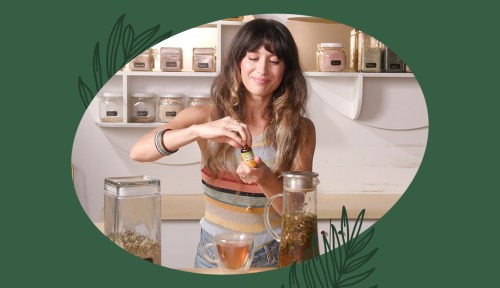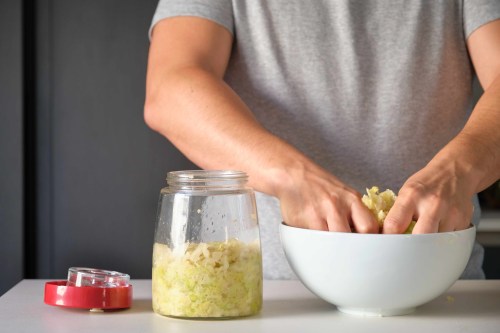Feel Like Your Hormones Are Out of Whack? This PMS-Soothing Tea Recipe Is Here To Help
Hormone imbalances can cause mood swings, skin woes, and more. This soothing PMS tea recipe is great for keeping everything balanced.

The tea is made from a red clover blossom and raspberry leaf base, which Robinett says which provide vitamins, minerals, and estrogen-supporting properties, uterine toning, and smooth muscle relaxing. There’s also licorice stick and dandelion root for liver support, plus ginger for more muscle relaxation.
Experts in This Article
registered herbalist, educator, and founder of Supernatural
Ready to get started? Watch the video to learn how to whip it up, and find the step-by-step recipe for soothing PMS tea below.
Soothing PMS tea recipe
Ingredients
1/3 cup red clover blossoms1/3 cup raspberry leaf1 stick licorice root, broken into a few pieces (you can also use 1 bag of licorice tea)1/3 cup dandelion root1 Tbsp ginger, fresh or driedA few drops of “Cramp Bark” herbal tincture, optional32 oz. hot water
Fill up a pitcher with the herbs, then pour in hot water, stir, and allow tea to steep several minutes—or overnight for a fuller extraction.
For more healthy recipes and cooking ideas from our community, join Well+Good’s Cook With Us Facebook group.








